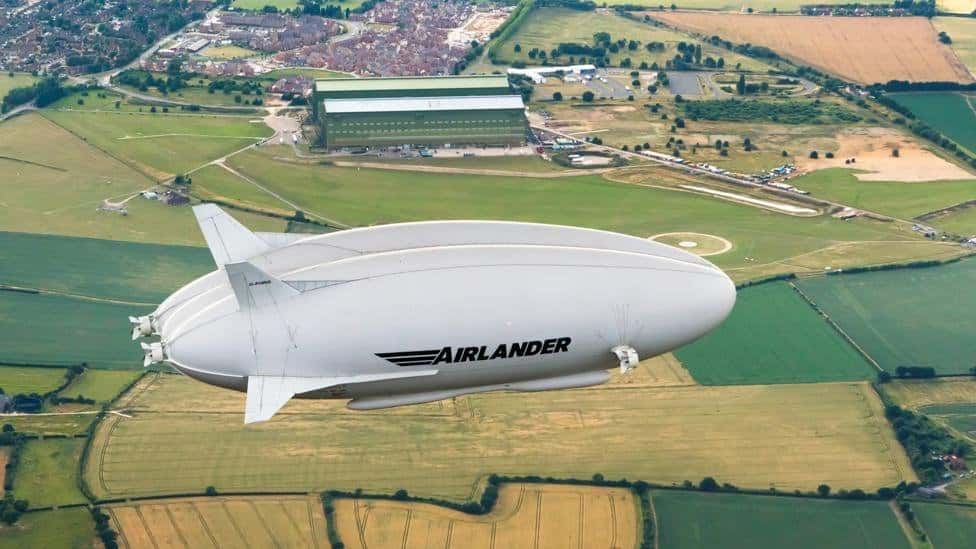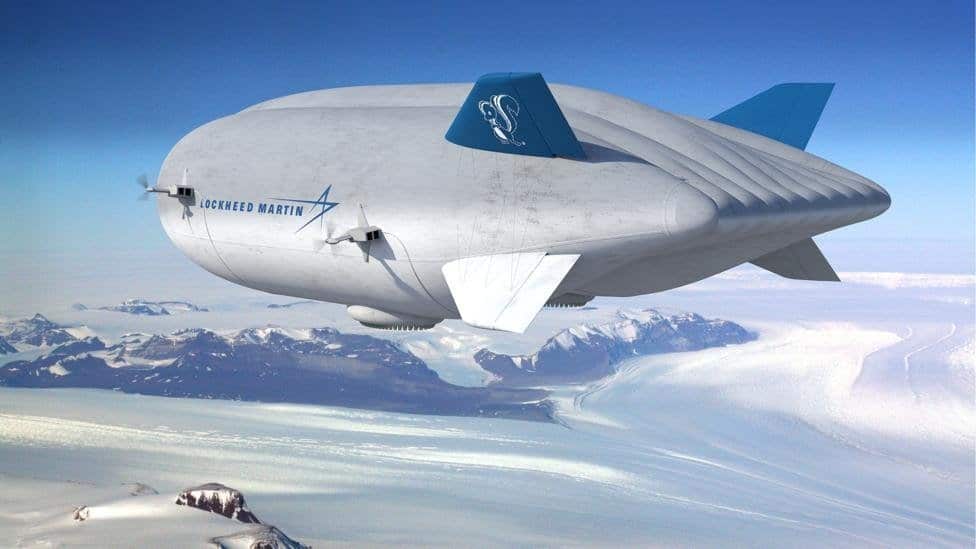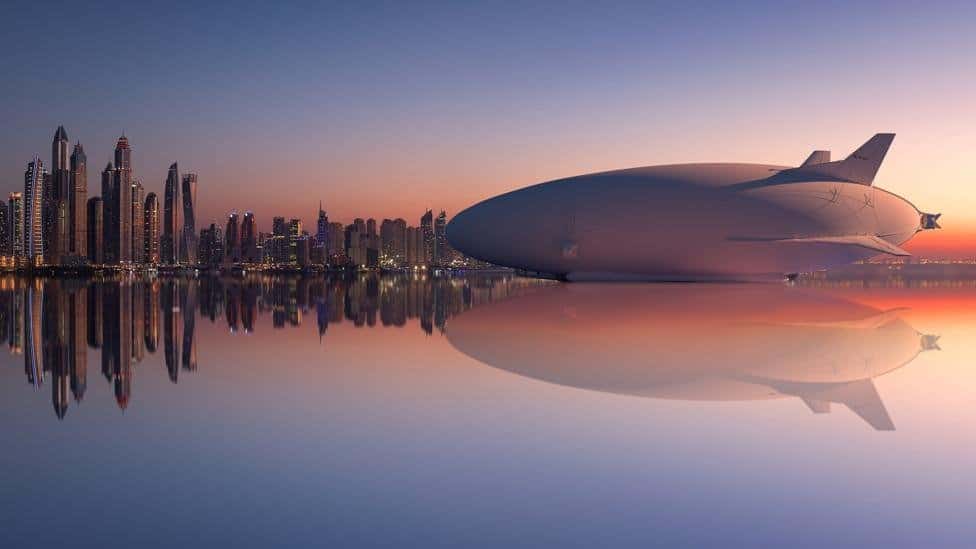Everyone has seen vintage footage of the Zeppelin disaster, and doesn't need to think too hard to understand why they abandoned the skies after a series of disastrous crashes.
Today, safer technology could be the key to the return of airships to our skies. Meanwhile we will see them from January, with all their suggestions, in the series "His Dark Materials" taken from the trilogy of fantasy novels by Philip Pullman. In the parallel universe described by the series, giant airships transport mail, soldiers into battle and explorers in the Arctic: from various London stations, the airships depart every hour like local trains.
A parallel reality (for this and other reasons) rather distant from ours. But we will see why we cannot call the use of airships in “His Dark Materials” imaginative.

The reality of our airships is different
In "this" universe you can find a couple of small promotional airships around the United States, another one that takes some tourists to the German countryside and that's it. Building an airship isn't that profitable yet.
In a few years, things could change, however. A completely new class of modern airships is on the way. In 2024, one of the first, new models of Airlander airships could fly over the North Pole, and would be the first in 96 years. On board, tourists from € 80000 per trip instead of explorers: if you want to spend, Tickets are already on sale.
The Airlander won't be the only one taking to the skies. Also within 4 or 5 years, an airship longer than an Airbus and as tall as a 12-story building is expected to take flight from Jingmen, China. His task will be to lift heavy loads in difficult places. Its producers have many expectations about this project of modern transport airships: they plan about 150 of these airships within 10 years.
Let's take a step back
In the history books, the crash of the Hindenburg in 1937 it marked the end of the brief and glorious era of the airship. In fact, the US Navy continued to use airships for anti-submarine warfare during World War II. The American Blimp Corporation produced blimps for advertising. Even the historic Zeppelin in Germany built new, larger and more technologically advanced airships, in a sector obviously in great difficulty.
The problem with the modern airship for investors and potential customers was that it still presented high costs and risks.
It didn't work much. The companies managed to sell few airships, there was demand for large models but the development costs discouraged their production. Today there is a determination to do things differently, at any cost.

HAV
The Airlander is the creation of Hybrid Air Vehicles (HAV), a company founded in 2007 by British airship pioneer Roger Munk. HAV's new technology center is located in a bustling industrial area on the outskirts of Bedford, an hour north of London, amidst a landscape of huge new warehouses and housing developments.
Inside the technology center is the cargo module of the Airlander prototype, still filled with banks of electronic equipment from its final test flight. Next to it is a life-size model of a passenger cabin for a flight to the North Pole.
Flying luxury
The cabins will be fully set up. There are full-height windows along both sides and even behind the cockpit. The prototype also includes a glass floor and a large oval leather sofa that appears to float in the void. This is for affluent passengers to sit on while sipping cocktails made behind the glass-topped bar.
The Airlander's “hybrid” design allows it to fly faster and carry more cargo than before. It does not need a large crew on land, nor moorings, nor a hangar. Nice solid construction, there's no risk of the gas leaking or making the whole aircraft look limp.
The airship was initially developed for the US military. When the program was canceled in 2013, it was brought back to the UK, converted for civilian use and named Airlander 10. It was finally retired in January 2019 after seven test flights.
“Our flights have proven to the outside world that the Airlander is real”Says Nick Allman, chief operating officer of HAV. “Until then, the risk was that people would look at it and think it was just a fictional product.”

There is a "niche" that could become profitable and justify the commercial return of airships for passenger transport. These are a type of customer who would gladly take a little more time and money to get to their destination, but with few emissions.
“Modern” airships produce less pollution than a conventional plane: HAV has received over 1 million euros in funding from the government to eliminate it completely with an electric propulsion system.
Weightlifting airships
Despite its enormous size, Airlander 10 is still relatively small. Customers who need to use the Airlander to lift heavy loads will prefer the larger, pre-designed Airlander 50. Yet it is precisely this market that rivals think is the best opportunity for the airship.
Lockheed Martin's Skunk Works in Palmdale, California, once famous for U-2 and SR-71 Blackbird reconnaissance planes, may soon be famous for something else: airships. The American aerospace giant's hybrid airship program is planned there.

Launched at the Paris Air Show in 2015, the LMH-1 is similar in size and shape to the Airlander. Like its British rivals, Lockheed initially built a virtual demo to showcase the concept, but – unlike HAV – they are still in the early stages of prototype development. Perhaps the designs of the airships of “His Dark Materials” are ahead of them. When Lockheed has received double-digit orders for his airship, they will open their beautiful factory.
"Demand is created when customers have unmet needs,” says Robert Boyd, program manager at Lockheed. “We identified the need for a safe and sustainable solution capable of delivering heavy loads and personnel to remote communities that have no infrastructure.”
“Airships can carry out numerous missions ranging from humanitarian aid to natural resource extraction to heavy lift operations. It is also possible that once airships enter the market, other uses may be discovered. In this case, the sky is not the limit. “
The flying whale
The airship in the shape of a blue whale is known by the (unattractive) name of LCA60T. It is the creation of the well-funded and ambitious Paris-based start-up Flying Whales, founded by Sébastien Bougon. Flying Whales has an impressive list of shareholders that includes the governments of France, China and Quebec. 25% of the business is owned by China Aviation Industry General Aircraft Co Ltd (Caiga), which has a reputation for aggressively pursuing new technologies.
Flying Whales wants to do things differently. It raised more than 320 million euros to produce the airship in Bordeaux, France, near Montreal, Canada and in Jingmen, China. Most importantly, he signed a memorandum of understanding with a major international airport operator to build 150 airship bases around the world.
“We analyzed many of the old airship designs so we could learn from them”, he claims Michele Renaud, Head of Flying Whales operations. “We wanted to carry 60 tons of payload and have a powerful propulsion system, and to do that you need something strong.”
“We will have our own operating company because there are many times when someone will need an airship. For example in a humanitarian disaster situation but will need additional technical support from people who know how to handle it.”
There was always an element of truth even in Pullman's alternative Oxford seen in His Dark Materials. Now his fantasy could become reality.
There is an old photograph from 1913 of an airship on the ground in University Parks, Oxford, surrounded by curious onlookers. In 1930, the huge British airship R100 hovered over the center of Oxford and brought the city to a standstill. In 2007, a local entrepreneur proposed a commercial airship service capable of connecting Oxford to Cambridge in an hour.
The world wasn't ready for Stewart's low-carbon vision in 2007, nor the parallel worlds of (did I mention?) “His Dark Materials.”


